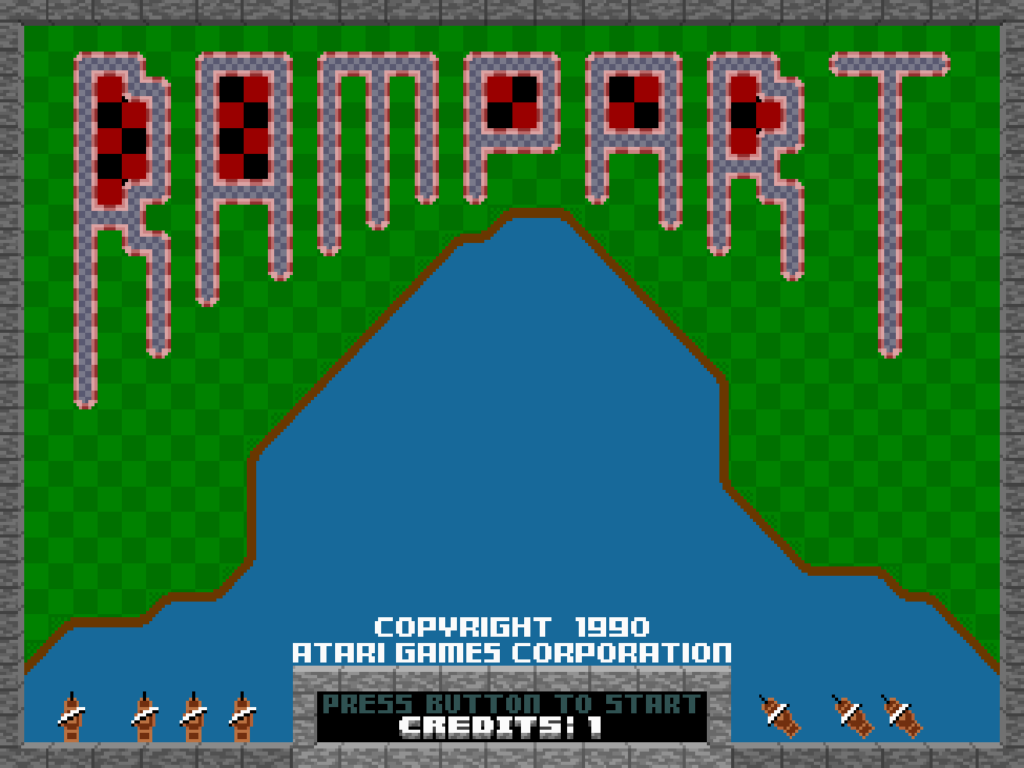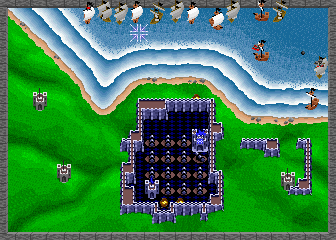Perhaps it’s a bit self-indulgent, but I’ve found a playthrough by someone other than me of the arcade version of Rampart, and decided to spotlight it. It’s a game that seems fondly remembered by some, and doesn’t seem to have sold badly. It has a baker’s dozen ports for a wide array of consoles. But no one, besides me, seems to talk about it any more, and until this video I was the only person of whom I have knowledge of completing the arcade version.
Even the MAME people needed my help to correct a game-breaking bug in the Rampart driver, because no one on the project could play Rampart well enough to get to that level. I don’t say this out of pride, but rather of sorrow. Other than its creators, I am probably the person in the world who knows the most about it. For more info, I point you to our Rampart tag.
On the video, there are caveats. The first one is I didn’t exactly it, but instead, Youtube’s vaunted algorithm has filed to hide it from me, because it’s six years old yet my searches haven’t turned it up to me until now. Sometimes I wish Google would stop showing me things it thinks I’d like and instead for a change found something I’ve explicitly asked it for.
Second, it’s by a Japanese speaker, of the Japanese version of Rampart. That was a two-player maximum version with joysticks, and from watching it, I can tell you it’s much easier than US Rampart. The player gets more time to rebuild, levels are easier to pass, grunts are less aggressive, and the game doesn’t pour on the Flagships, the red ships, with anywhere near as much energy in the last two levels. They manage to finish the game in one credit, something I’ve never done on the US version, but I strongly suspect I could do it too on that version, and fairly easily.
Still, it’s someone other than me who has a complete game on Youtube, in however many credits. It’s played on arcade hardware too, which I haven’t been able to do since Rampart was at our local arcade, back when that place existed, around 1991 or 1992. Here is that play (57 minutes):
I really don’t want to detract from their game, bit I’m a bit disappointed. I’ve played Rampart, mostly in MAME but sometimes on the Gamecube version of Midway Arcade Treasures, and on one particular DragonCon I played the PS3 version (there’s something of a story there). Every time, I’ve had to fight against bad luck and the most diabolical impulses of designers john Salwitz and Dave Ralston. Sometimes I win and sometimes I lose, but, ever, only I care.
The search for other people who have finished the US version of arcade Rampart continues.
Late addition: I have more discoveries to offer on this matter, but I have to figure some things out first. To be continued….



